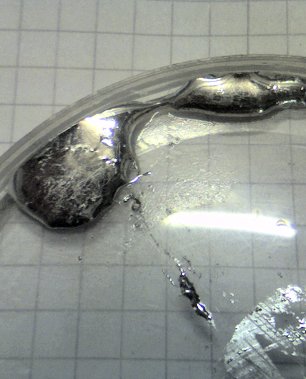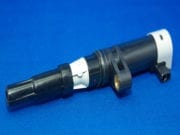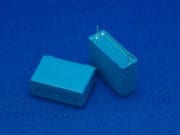Liquid Metal Experiments
 Most metals are a tough solid material at room temperature, but some metals can be liquids. The most obvious one is the element Mercury, which has a melting temperature of -38.83 °C. When certain metals are mixed together they can form what is known as an alloy. The atoms of the various metals will bond together to form the new metal which may have unique properties. Below you can learn how an alloy can be made at home which will melt in hot water. The alloys melting temperature is less than that of any of the original metals.
Most metals are a tough solid material at room temperature, but some metals can be liquids. The most obvious one is the element Mercury, which has a melting temperature of -38.83 °C. When certain metals are mixed together they can form what is known as an alloy. The atoms of the various metals will bond together to form the new metal which may have unique properties. Below you can learn how an alloy can be made at home which will melt in hot water. The alloys melting temperature is less than that of any of the original metals.
Using three common metals you can make a metal alloy which will melt in hot water. The metals are Bismuth, Lead, and Tin. Bismuth can be found in the form of ‘lead free’ fishing weights, and the other metals can be found together in the form of solder. Most solder is a mix of 60% Tin and 40% Lead, but for this experiment you will need the type that is 40% tin and 60% Lead.
A eutectic alloy is one where the ratio of the materials is made to give the lowest melting temperature possible. The eutectic alloy of Bismuth, Lead, and Tin would have the following ratios. 52.53% Bismuth, 32.55% Lead, and 14.92% Tin, by weight. The resulting alloy from this mixture can be expressed with the formula, Bi8Pb5Sn4. When mixed in the correct proportions this metal will melt at 95°C
Another liquid metal can be made that will melt at -20°C. This metal is made from gallium, indium, and tin.
As you can see from this image, This type of metal will easily stick to other materials. This is why mercury is still used in many devices.






What is light reflection factor of liguid GaInSn, i found that it is better than mercury >75%
No. They would amagamate to form an alloy.
If I dip indium at room temp into liquid lead bismoth at 85C will the indium go into solution with the lead bismoth and why?